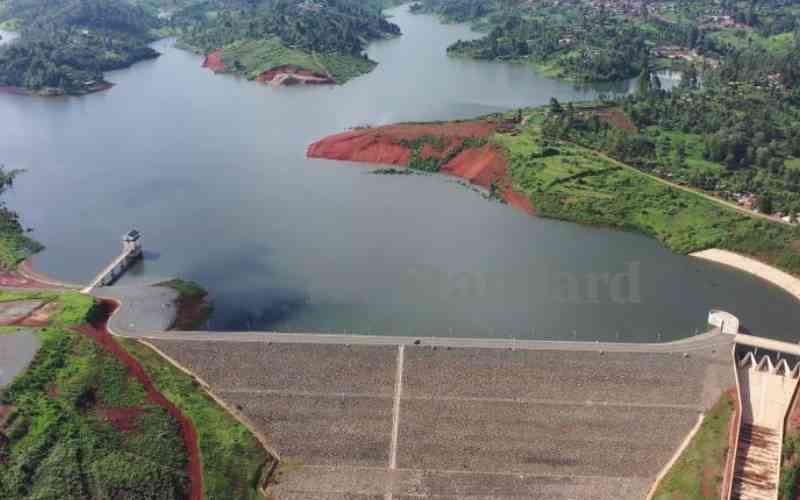The controversy over the Northern Collector Tunnel project in Murang’a could have been avoided had there been a strong water management policy and clear information made available. The current trend is creating water funds. This strategy is to involve private companies to work with communities in the management of water systems upstream.
Why has the Murang’a tunnel project come unstuck? The pertinent questions are: Were the riparian communities adequately informed about it? Were the Project Affected People (PAP) meetings conducted and the communities prepared for the impacts? These are pertinent questions because documents in the internet say the project was conceptualised way back in the 1990s. It is also part of Vision 2030, the Tana and Lake Basin initiatives pillar.
A water fund would have avoided such controversy.
According to The Nature Conservancy (TNC), a charitable group that runs several water funds around the world, they are strategies of attracting finances from large water users such as irrigation boards or hydroelectric companies ‘to pay for services that nature provides to humans...’ Any organisation with interest in the ecology such as WWF and CGIAR can be roped in. These have a long experience in funding community programmes.
The funds raised are invested in financial markets through trust funds. The returns are used to marshal private and public funds to conserve watersheds, public protected areas, pay for conservation, and solicit financial and technical support.
The Quito Water Fund in Ecuador was the first such project. Established in 2000 by TNC, it was meant to finance upstream water conservation projects and ecosystem services.
In 2015, the first water fund in Africa was launched in Nairobi. Its objective is to protect Tana River sources in the Aberdare and to train farmers on different ways of minimising soil erosion that has steadily silted up reservoirs, making rivers increasingly flashy and incapable of meeting rising water requirements.
Information from the TNC website says the fund is headed by a private-public Steering Committee, including Nairobi City Water and Sewerage Company, the Kenya Electricity Generating Company, International Centre for Tropical Agriculture, Tana and Athi Rivers Development Authority, Water Resources Management Agency, East Africa Breweries and Coca Cola, among others.
The Nairobi Water Fund is hailed as a practical, scientific and financial mechanism that ‘would ensure water security to all. Its supporters say it is a win-win strategy for all stakeholders.’
Of course, the concept has both advantages and disadvantages, and which the targeted riparian communities should be educated on.
A major advantage of water funds is that the corporate stakeholder brings the best practices in organisational management. They also pay environmental experts to rehabilitate the ecology, through reforestation or chemical control. Private organisations can also facilitate technology transfer to be used in water management, e.g. water harvesting and flood control.
Only corporates have the type of money required to protect the water towers that feed the aquifers, rivers, lakes and the taps. Overall, TNC argues the plan offers a transparent and sustainable of watershed management.
Creating water funds should not be difficult. After all, millions of acres of land in Africa have already been taken by private companies.
Few African governments are able to continue providing clean water for all and protecting the environment. There is simply not enough money to meet all competing needs.
Water funds, according to TNC, meet watershed management costs, something often neglected in water supply economics and the same help farmers earn sustainable livelihoods.
However, the spread of water funds also raises questions about the impacts of allowing profit-seeking corporate organisations to control important hydrological commons.
Corporate see, breathe, sleep profits and they will not finance water funds for charity.
Water funds may smell like ‘corporate social responsibility’ but like everything else, it is all for self-interest. The logic behind their involvement is to secure water for their use in the business of making money. This explains why the largest water funds are fronted by well-known water guzzlers like Coca Cola, Pepsi and SABMiller.
Writing on the subject in the CGIAR website, journalist Fred Pearce suggests that in starting a fund, the following questions should be answered: who is in charge? Is the community involved? Is this really the right way to manage vital resources?
To avoid alienating the riparian communities, there is need to fully involve the local communities.
Stay informed. Subscribe to our newsletter
Without this, even the best strategies will not work. Environmentalists say such partnerships with major industrial water users and polluters is a high-risk strategy.
As for the Murang’a project, the reason why it is easy for self-seeking politicians take advantage of such projects is because the communities and their leaders are ignorant of the facts.
In all, given that water is becoming scarcer, we need to think outside the box if we want to avoid future conflicts.
 The Standard Group Plc is a
multi-media organization with investments in media platforms spanning newspaper
print operations, television, radio broadcasting, digital and online services. The
Standard Group is recognized as a leading multi-media house in Kenya with a key
influence in matters of national and international interest.
The Standard Group Plc is a
multi-media organization with investments in media platforms spanning newspaper
print operations, television, radio broadcasting, digital and online services. The
Standard Group is recognized as a leading multi-media house in Kenya with a key
influence in matters of national and international interest.
 The Standard Group Plc is a
multi-media organization with investments in media platforms spanning newspaper
print operations, television, radio broadcasting, digital and online services. The
Standard Group is recognized as a leading multi-media house in Kenya with a key
influence in matters of national and international interest.
The Standard Group Plc is a
multi-media organization with investments in media platforms spanning newspaper
print operations, television, radio broadcasting, digital and online services. The
Standard Group is recognized as a leading multi-media house in Kenya with a key
influence in matters of national and international interest.









